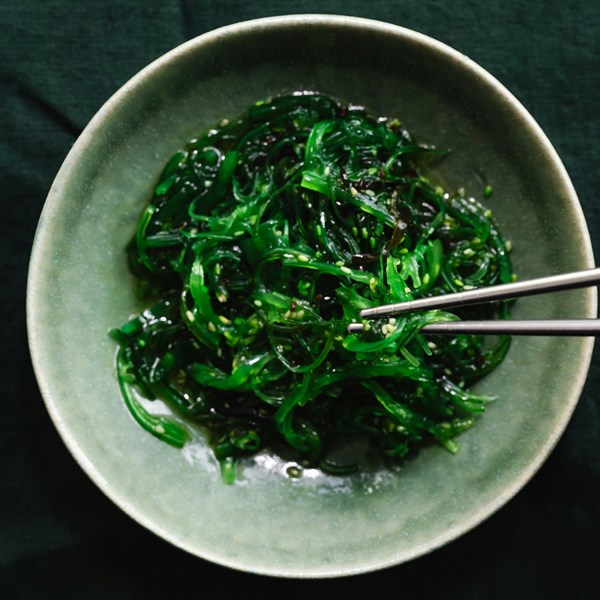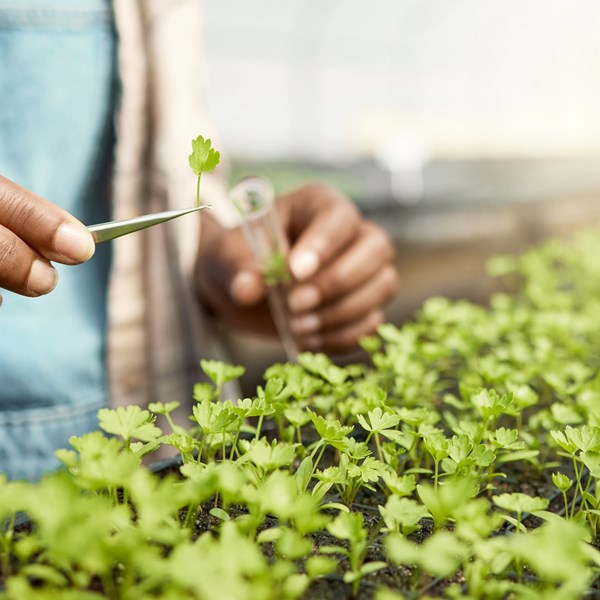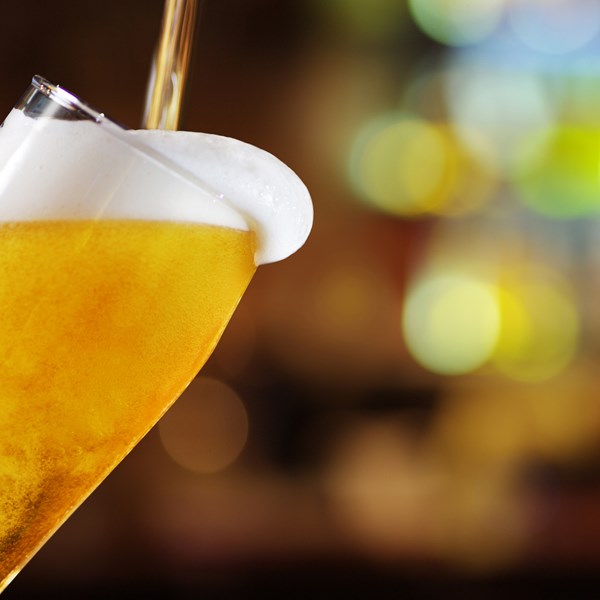Pressures of climate change, resistance, regulatory pressures, and yield improvement require new crop protection molecules.
Despite improvements from the bad old days of DDT, there’s an acute recognition that spraying crops with broad-spectrum protection products and fertilisers is still reducing biodiversity (particularly important when you’re killing pollinators), polluting waterways, and reducing soil quality by degrading the soil microbiota. Established industrial chemistry approaches - which often screen for efficacy while ignoring many off-target effects - are unlikely to deliver the increase in specificity required to ameliorate these drawbacks.
Advances in molecular and synthetic biology have paved the way for designing and synthesising highly targeted crop protection solutions. Because many of these technologies target specific molecules in an exact pest or plant species, their effects on biodiversity are minimal, particularly compared to more established methods. Furthermore, the carbon and macro-environmental footprint of several targeted molecular products is highly mitigated because many of these solutions can be made using synthetic biology approaches (think high-tech fermentation - or molecular brewing!), rather than energy-intensive multi-step chemical synthesis.
Here, we briefly review two such developments; and how the IP around these technology types can be protected.
A REVIEW OF TARGETED MOLECULAR SOLUTIONS
Bio-based pheromones
Insects are amongst the most damaging pests to crops. Not only do they reduce yield by eating crops - particularly as larvae - but many pests act as vectors for diseases. Some insects such as the cabbage stem leaf beetle even offer “two pests for the price of one”, by targeting seedlings as larvae and mature plants as adults.
Using metabolic engineering, plants have been made to produce precursors of sex pheromones from the diamondback moth; and other pheromones have been produced using bio-based processes. These pheromones are highly selective, and allow the trapping and elimination of pests that are attracted to them away from crops - and so preventing them from laying eggs on or grazing on plants - without interfering with beneficial insects such as bees. Although downstream chemical processing was required to produce the end product, these bio-based precursors are predicted to make difficult-to-synthesise pheromones price-competitive with more damaging chemical synthesis.
Pheromone traps are nothing new. However, in an industry where lack of familiarity and difficulty of use are serious barriers to adoption by farmers, the “plug and play” interaction between high-tech molecular biology and decades-old technology is a serious boon. Furthermore, the bio-based processes used to generate these important control molecules can appreciably cut the environmental impact of pheromones, and - taking a holistic view - the farmers that use them.
RNAi protection
RNAi is a powerful tool that can be used to target and switch off essential genes or genes associated with plant disease, in viral and fungal pathogens - and even insects - as they infect or infest crops. This prevents them from getting a damaging foothold in the plant.
This method can be used to target specific species because it relies on the binding of RNA molecules applied to the plant to unique gene sequences in the target. Because of the specificity of the technique, RNAi can mitigate or eradicate specific burdensome pathogens and pests, while sparing beneficial microbiota and insects.
Using RNAi, researchers have been able to protect crops against the soft fruit fungus Botrytis; and established players are developing new RNAi-based pest control lines. By gaining US experimental use authorisation in late 2023, one such company - GreenLight Biosciences - is moving close to bringing its RNAi pesticide Leprona to market, offering hope in controlling the highly destructive Colorado potato beetle.
You may recognise RNA from your COVID vaccine. As you may know, a significant challenge in getting these vaccines to market is the need for refrigeration, to keep the RNA stable form until the vaccine is administered. RNAi is no different, and its application to the field - where it can’t be refrigerated after administration but needs to remain active for days if not weeks - is currently proving fertile ground for innovation.
HOW DO YOU PROTECT THE INNOVATION IN NEW CROP PROTECTION MOLECULES?
Although technically different, the IP strategies used to protect targeted molecular agents can take the lead from the chemical industry and the pharmaceutical sector.
Using the right analytical equipment, chemical agents and formulations have a structure or composition that can be reverse-engineered by third parties; however, it can be very difficult to prove theft of a technology. This is why most businesses choose to protect chemical agents and formulations using patents, which provide the patentee with a monopoly over the claimed subject matter.
The strongest form of protection is patent protection of the agent per se.
For example, where the agent is an organic molecule with a specific chemical structure (such as a targeted molecule, insect pheromone, or bio-stimulant), this can be protected in the same way as any other new organic molecule, by claiming the specific structure of the compound. Where broader protection is desired - for example, if molecules with similar but non-identical structures are thought to have similar and commercially useful properties - a more generic compound scope (or “Markush structure”) may be claimed. Alternatively, nucleic acids (such as those in RNAi) can be protected by claiming the RNA sequence or group of sequences.
In some instances, repurposed compounds (i.e., known compounds with an extant but unrelated use) can also be protected for use in specific agricultural settings, in a way that is broadly analogous to pharmaceutical second medical use claims; and new formulations of known compounds can be patentable.
Also protectable are methods of synthesising the chemical agents. As well as covering the use of the specific method, products directly obtained from the claimed method are also protected. Although these claims are more difficult to enforce due to the inherent difficulties in proving that a competitor is using your method, they can be of particular value where a molecule or composition can only be made using your patented method, or your method introduces a detectable hallmark into the final product.
Although the basic requirements for the patentability of molecules are near-identical in many territories, some jurisdictions have specific exclusions that require expert navigation. For example, under European practice it is generally possible to protect a nucleic acid with a particular nucleotide sequence, provided it is isolated from its natural context. By contrast, the same matter would be excluded from patentability in the US, because it is drawn to “a law of nature with nothing more”. In these instances, formulation claims can be more successful.






